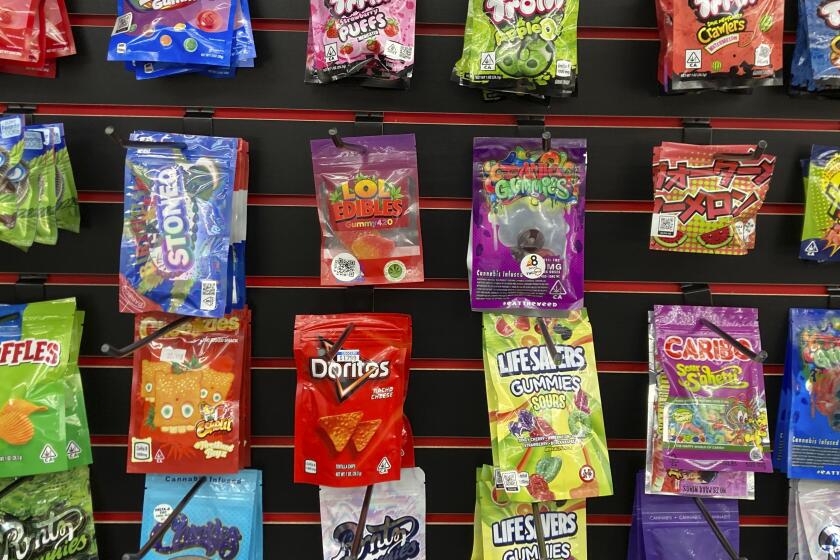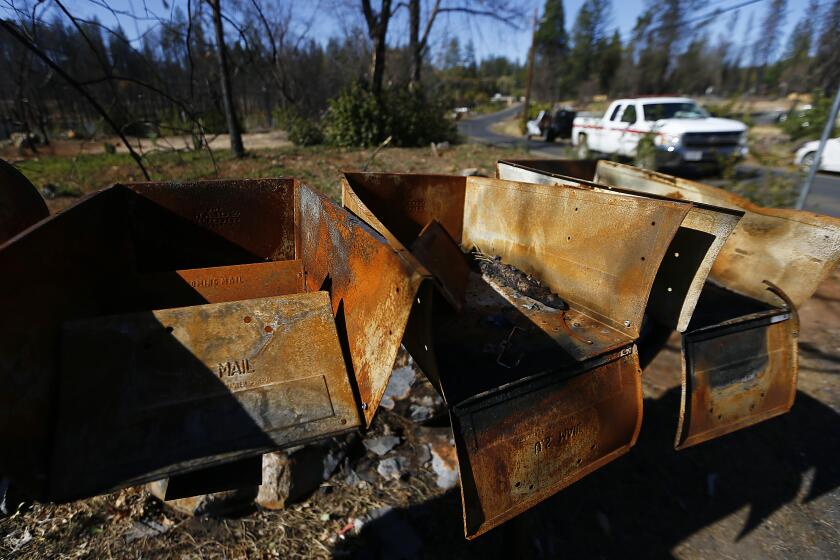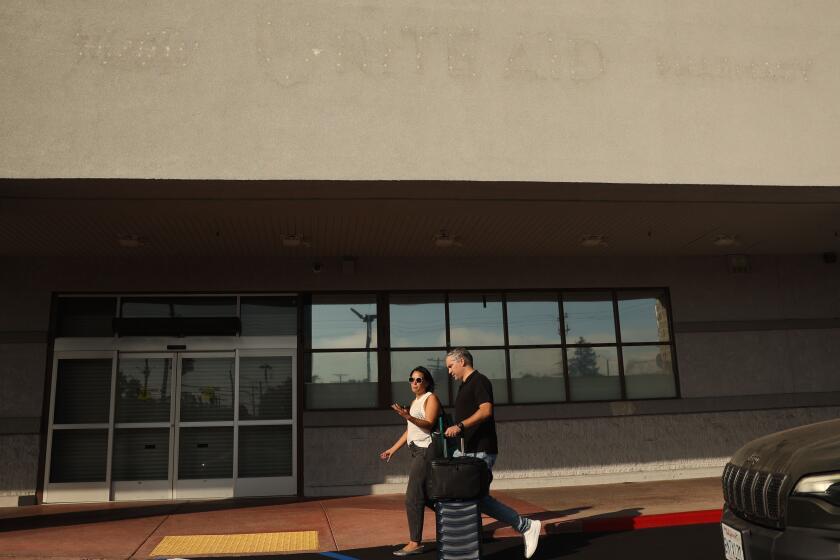Gas prices drop to ’04 levels
Pump prices continued their unprecedented decline in California and much of the nation over the last week, reaching levels not seen since the early weeks of 2004, the Energy Department said Monday.
The new lows came on an odd day in the commodities markets in which the same threat of further production cuts this week by the Organization of the Petroleum Exporting Countries was seen first as bullish and then later on as bearish for oil.
Crude oil futures for January delivery fell $1.77 to close at $44.51 a barrel on the New York Mercantile Exchange after trading as high as $50.05 during the day.
“The market rallied early on from the fact that OPEC was promising more cuts in production, but then the thinking changed that this was only going to hurt demand with the global economy already faltering,” said Phil Flynn, vice president and senior market analyst for Alaron Trading Corp. in Chicago.
Analysts differed on where energy prices were headed.
Some, such as Tom Kloza, chief oil analyst for the Oil Price Information Service in New Jersey, said that oil and gasoline prices would drift until January, when more negative economic reports could hit the nation.
“There is a sense of more bad news after Christmas, in more layoffs that businesses were not going to talk about until the holidays were over. We could have a miserable first 100 days of 2009 and that could hurt demand for oil and gasoline even more,” causing prices to decline, Kloza said.
Others, such as Sean Brodrick, a natural resources analyst with Weiss Research’s online newsletter Money and Markets, saw different pressures: low oil prices reducing demand for alternative energy technologies and for relatively high-cost oil extraction efforts such as oil shale.
“Once solar and wind power installations are in, they don’t stop using them, but there will be less pressure to build more in some parts of the country. There will be less incentive to produce from oil shale and tar sands. When the global economy strengthens again, there could be short oil supplies almost immediately,” causing prices to rise, Brodrick said.
Meanwhile, relief at the pump continued everywhere except in the Midwest, where prices rose for the first time since Hurricane Ike caused spot shortages there in September. The Midwest average rose 4.2 cents to $1.644 for a gallon of self-serve regular gasoline.
Nationally, the average fell 4 cents to $1.659, according to the Energy Department’s weekly survey of filling stations. That was $1.339 below the year-earlier price and the lowest recorded since gas cost $1.648 on Feb. 16, 2004.
California’s gasoline average fell 6.7 cents to $1.738 a gallon, or $1.547 below the year-earlier price.
That was the lowest since the $1.726 recorded Jan. 26, 2004.
But Americans haven’t been celebrating lower prices by jumping behind the wheel. A Department of Transportation report released Friday showed that, through October, Americans had turned in their lowest mileage totals in five years. That included 9 billion fewer miles driven in October 2008 compared with the same month last year.
The decline reflects the reaction to last summer’s record fuel costs and, more recently, to the dismal economy, said economist John Husing.
Husing used San Bernardino and Riverside counties as an example, noting a plunge in building permits for construction to $3.9 billion this year from $12.5 billion in 2003. In 2005, the two counties had 45,299 new single-family home building permits, compared with a likely total this year of just over 5,730, said Husing, who heads Economics & Politics Inc., an economic research firm specializing in the Inland Empire.
“You can’t take that kind of money out of an economy without it having an enormous impact on people’s behavior,” Husing said.
--
More to Read
Inside the business of entertainment
The Wide Shot brings you news, analysis and insights on everything from streaming wars to production — and what it all means for the future.
You may occasionally receive promotional content from the Los Angeles Times.











